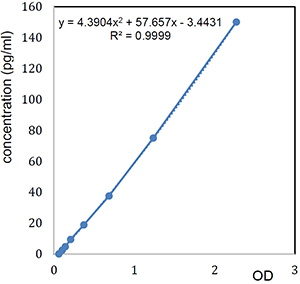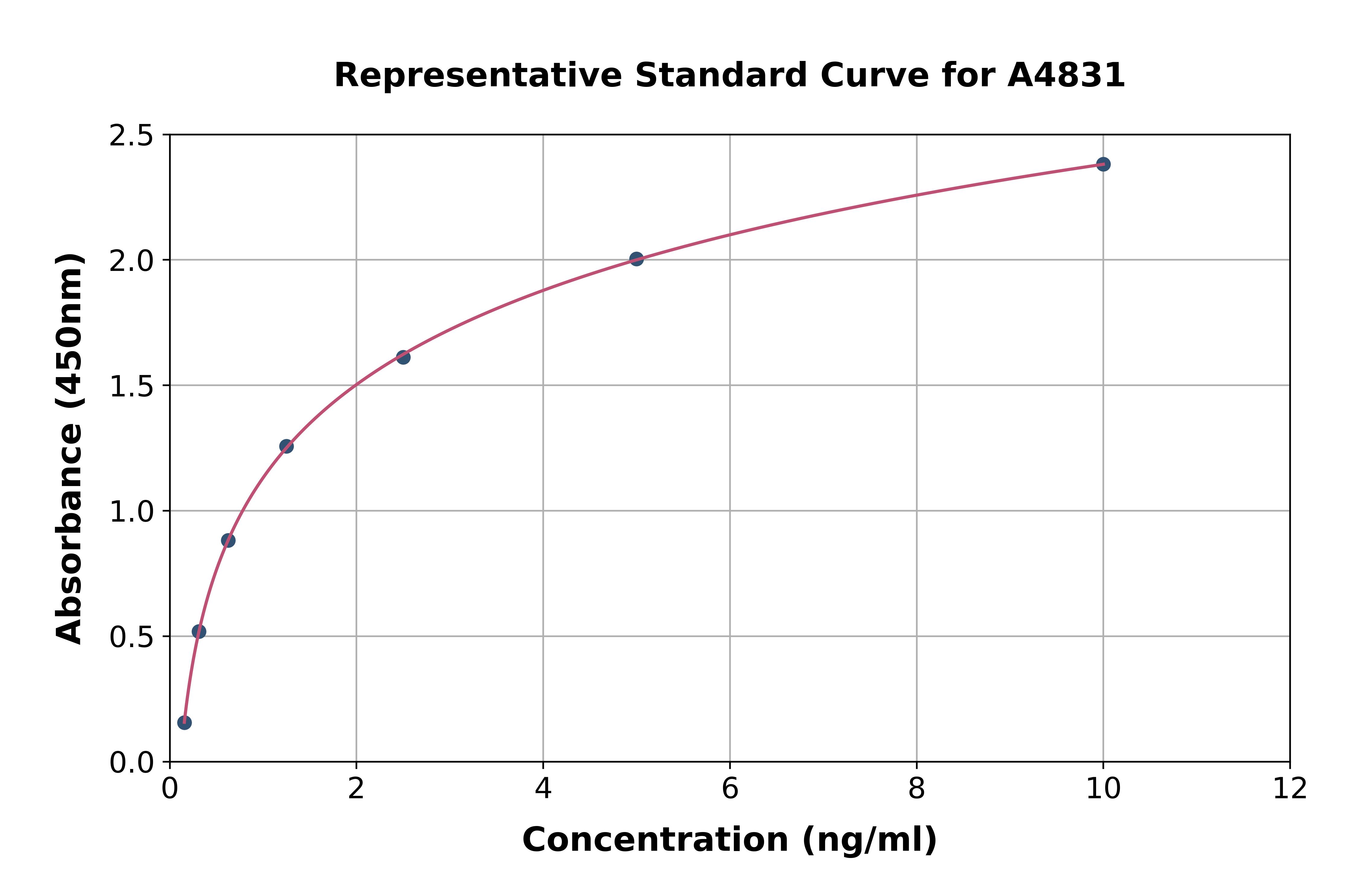
Figure: Specific quantitation of APRIL in human serum. Method: Serum from a healthy patient is left untreated or treated with 1microg/ml of the APRIL receptor, TACI (human):Fc (human) (Prod. No. AG-40B-0079). APRIL levels were measured us
PD-L1 (human) ELISA Kit
AG-45B-0016
ReactivityHuman
Product group Assays
Overview
- SupplierAdipoGen Life Sciences
- Product NamePD-L1 (human) ELISA Kit
- Delivery Days Customer10
- ApplicationsELISA
- Assay Detection Range2.34 to 150pg/ml
- Assay Sensitivity0.8pg/ml
- CertificationResearch Use Only
- Scientific DescriptionELISA Assay. Detects soluble human PD-L1 (sPD-L1) in serum, plasma and cell culture supernatant. Assay Type: Sandwich. Sample Type: Cell Culture Supernatant,Plasma,Serum. Range: 2.34 to 150pg/ml. Sensitivity: 0.8pg/ml. PD-L1 (also known as Programmed Cell Death 1 Ligand Protein 1; CD274 or B7-H1) is an immuno-coinhibitory member of the B7 family and functions as an immune checkpoint via its interaction with its receptors PD-1 (CD279) and CD80 (also known as B7-1). PD-L1 is expressed by hematopoietic cells such as T, B and dendritic cells and by parenchymal cells in response to cytokine (i.e. IFN-gamma) induction. Ligation of PD-1 by PD-L1 (B7-H1; CD274) or PD-L2 (B7-DC; CD273) inhibits TCR-mediated T cell proliferation and production of IL-1, IL-4, IL-10 and IFN-gamma and also inhibits BCR mediated signaling. PD-L1 binding to CD80 inhibits T cells proliferation. PD-1 deficient mice have a defect in peripheral tolerance and spontaneously develop autoimmune diseases. Soluble form of PD-L1 (sPD-L1) is expressed upon immune cells activation and can be secreted in the serum/plasma. Soluble checkpoints, such as sPD-1 or sPD-L1, are involved in positive or negative immune regulation and changes in their serum/plasma levels affect the development, prognosis and treatment of cancer. Increase of sPD-L1 or sPD-1 levels have been detected in patients with different types of cancer. This PD-L1 (human) ELISA kit is developed to detect specifically sPD-L1 (human) in different biological fluids. - PD-L1 (also known as Programmed Cell Death 1 Ligand Protein 1; CD274 or B7-H1) is an immuno-coinhibitory member of the B7 family and functions as an immune checkpoint via its interaction with its receptors PD-1 (CD279) and CD80 (also known as B7-1). PD-L1 is expressed by hematopoietic cells such as T, B and dendritic cells and by parenchymal cells in response to cytokine (i.e. IFN-gamma) induction. Ligation of PD-1 by PD-L1 (B7-H1; CD274) or PD-L2 (B7-DC; CD273) inhibits TCR-mediated T cell proliferation and production of IL-1, IL-4, IL-10 and IFN-gamma and also inhibits BCR mediated signaling. PD-L1 binding to CD80 inhibits T cells proliferation. PD-1 deficient mice have a defect in peripheral tolerance and spontaneously develop autoimmune diseases. Soluble form of PD-L1 (sPD-L1) is expressed upon immune cells activation and can be secreted in the serum/plasma. Soluble checkpoints, such as sPD-1 or sPD-L1, are involved in positive or negative immune regulation and changes in their serum/plasma levels affect the development, prognosis and treatment of cancer. Increase of sPD-L1 or sPD-1 levels have been detected in patients with different types of cancer. This PD-L1 (human) ELISA kit is developed to detect specifically sPD-L1 (human) in different biological fluids.
- ReactivityHuman
- Storage Instruction2°C to 8°C
- UNSPSC41116158


![PD-L1:B7-1 [Biotinylated] Inhibitor Screening Assay Kit (Mouse)](https://bpsbioscience.com/media/catalog/product/7/9/79821.png)


